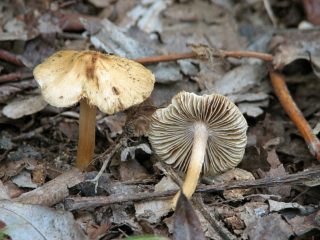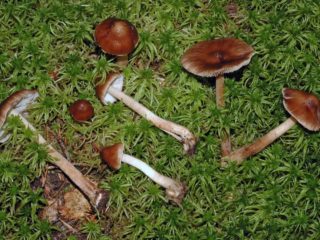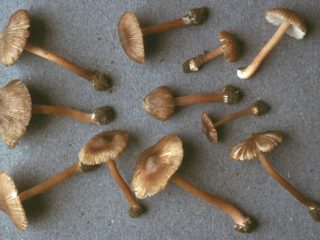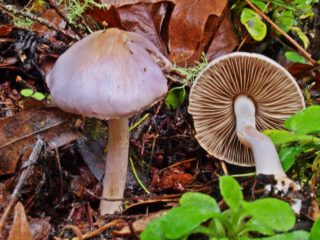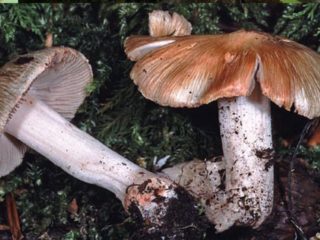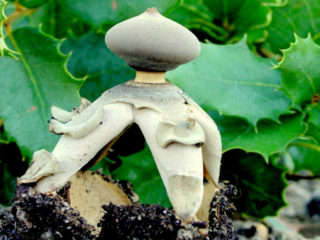Content
Mushrooms of the species Fiber similar (Inocybe assimilata) are representatives of the class Agaricomycetes and belong to the Fiber family. They also have other names - umber Fiber or Amanita similar. They got their name from the fibrous structure of the stem and the external resemblance to some edible mushrooms.
What does a fiberglass look like
The caps of young mushrooms are cone-shaped with uneven, first tucked up, then raised edges. Growing up, they become convex with a noticeable tubercle in the center and reach a diameter of 1-4 cm. The texture is dry, fibrous. Dark brown scales may be present on the surface. The private bedspread covering the bottom of the cap is white and fades quickly.
Often located plates adhere to the pedicle and have serrated edges. As the fruiting body grows, it changes color from cream to brown-red.
The leg does not differ in color from the cap. Reaches from 2 to 6 cm in length and 0.2-0.6 cm in thickness. In the upper part, the formation of a powdery coating is possible. An old mushroom can be identified by a full stem with a white tuberous thickening underneath.
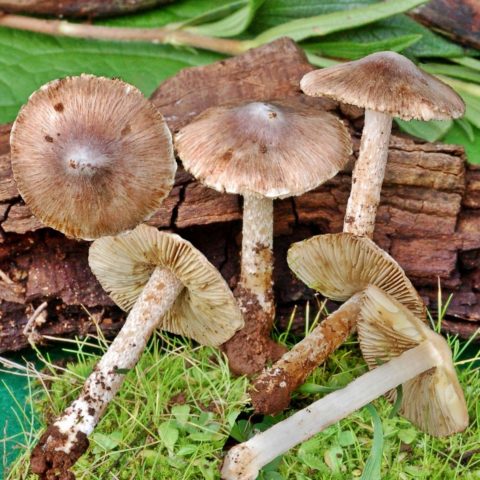
The leg and the cap of a similar fiber are identical in color.
A distinctive feature is an unpleasant smell of yellowish-white flesh.
Where does the fiber grow like
Mushrooms of this species grow singly or in small groups. The most common habitats are coniferous and mixed forests of Eurasia and North America.
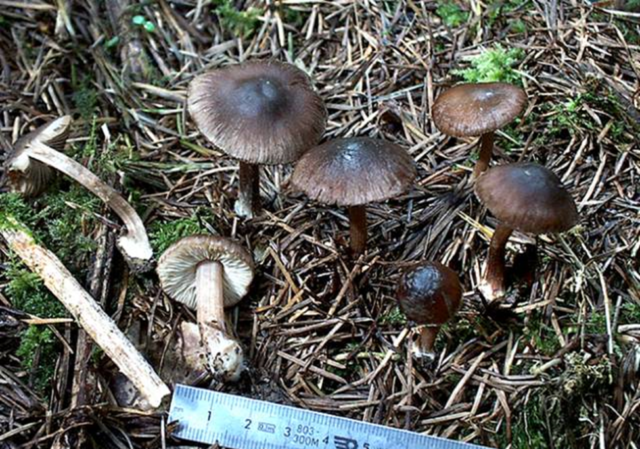
Mushrooms grow in small groups and have a cone-shaped cap
Is it possible to eat similar fiber
Similar fiber belongs to the category of inedible poisonous mushrooms. The poison muscarine contained in the fruit bodies makes it more poisonous than the red fly agaric.
Once in the human body, the poisonous substance has the following negative effects:
- increases blood pressure;
- affects the nervous system;
- causes nausea, vomiting, dizziness;
- provokes spasms of the smooth muscle layers of the gall and urinary bladder, bronchi, spleen, uterus.
Similar fibers should not be grown and harvested.
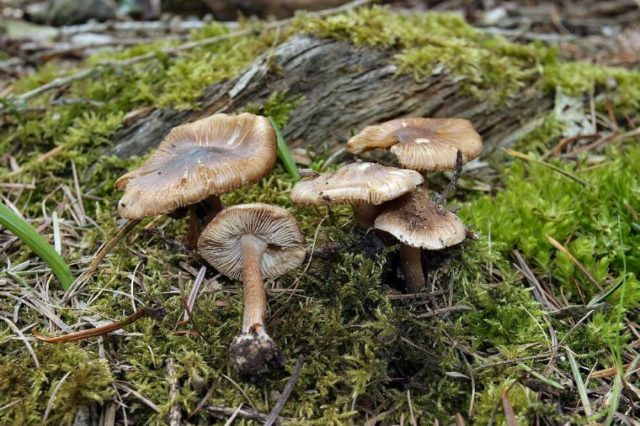
Similar fiber bears fruit in April
Poisoning symptoms
When muscarine enters the stomach, the first signs of poisoning appear after 15 minutes and are accompanied by the following symptoms:
- sweating;
- bitterness in the mouth;
- diarrhea;
- expansion of small blood vessels in the face;
- salivation;
- heart rhythm disorder;
- decreased visual acuity, double vision;
- suffocation;
- diarrhea;
- convulsions;
- nausea;
- vomiting;
- severe pain in the abdomen and stomach;
- lowering blood pressure.
The intensity of the manifestation of signs of poisoning depends on the amount of poison that has entered the body. If the victim is not provided with timely first aid and medical care and the antidote is not administered in case of severe intoxication, this can lead to death as a result of cardiac arrest.
First aid for poisoning
In case of poisoning with muscarine contained in a similar fiber, you must immediately call the ambulance service, drawing the dispatcher's attention to the specifics of the poisoning, so that a toxicological team was sent to the call.
Before the arrival of doctors, the victim should be given first aid:
- Induce vomiting by irritating the root of the tongue with the thumb and forefinger.
- Rinse the stomach with plenty of water.
- Give any absorbent to the poisoned person. The most affordable is activated carbon. Its dosage is determined at the rate of 1 tablet per 10 kg of body weight.
- Apply a cleansing enema
It is unacceptable to use anesthetic and antispasmodic drugs before the arrival of an ambulance. Taking them will distort the clinical symptoms and may lead to a decrease in the effectiveness of further treatment with medications.
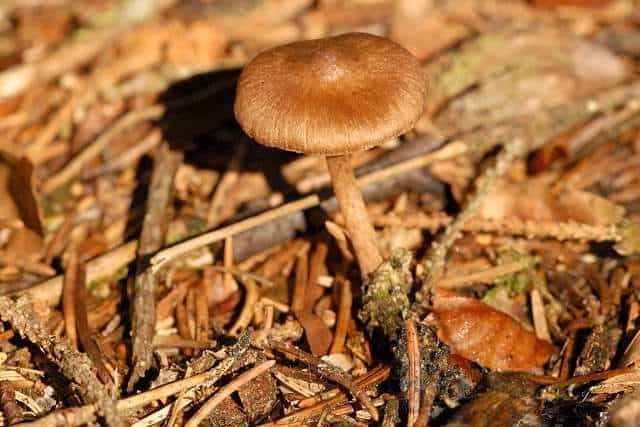
Many inexperienced mushroom pickers confuse a poisonous fiberglass similar to edible mushrooms.
Conclusion
Fibers similar is an inedible poisonous mushroom containing the poison muscarine. The danger of representatives of this species lies in their similarity with some edible mushrooms that grow with them in the same territories. Mushroom pickers, especially beginners, should learn to distinguish them, and when the first signs of poisoning appear, be able to provide first aid before the arrival of qualified medical personnel.
